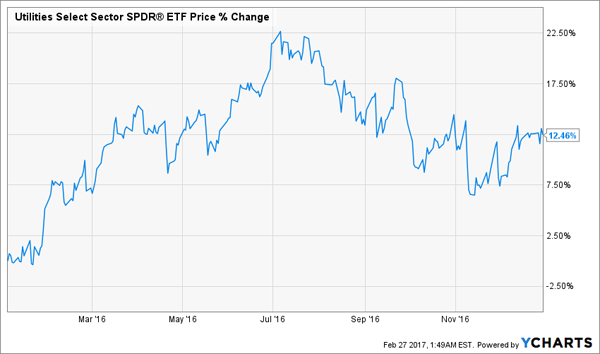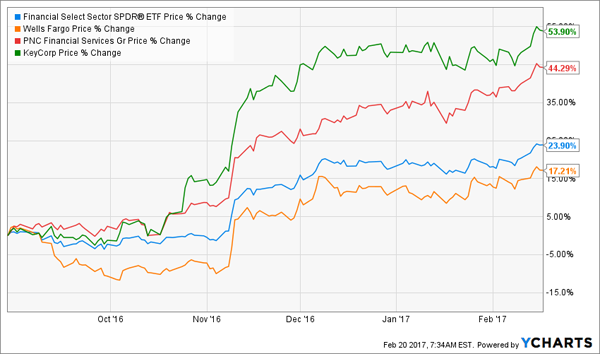5 Snubbed Utilities With 20% Gains Ahead
Michael Foster, Investment StrategistUpdated: March 4, 2017
Utilities are a particularly enjoyable sector for income investors because they offer sustainable and growing dividends—if you choose the right companies.
This boring and predictable model means utilities tend to attract risk-averse investors who jump out during times of extreme caution—even when there’s really nothing to be cautious about. That’s why the Utilities Select Sector SPDR ETF (XLU) erased much of its 2016 gains in the second half of the year, when the months leading up to the presidential election led to market panic.
Surprising Volatility

What’s even more interesting is that utilities continued to fall even after Donald Trump won and the so-called “Trump rally” began.… Read more



